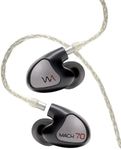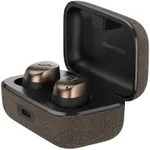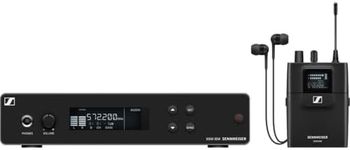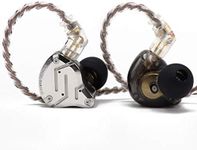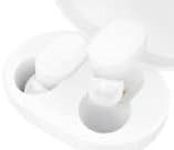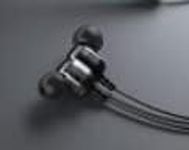Buying Guide for the Best In Ear Monitors
In-ear monitors (IEMs) are a great choice for anyone looking for high-quality sound in a compact and portable form. Whether you're a musician, an audiophile, or just someone who enjoys listening to music on the go, picking the right IEMs can significantly enhance your listening experience. To make an informed decision, it's important to understand the key specifications and how they align with your needs and preferences.Driver TypeThe driver is the component inside the IEM that produces sound. Common types include dynamic, balanced armature, and hybrid drivers. Dynamic drivers are known for their strong bass and durability, making them suitable for bass-heavy music genres. Balanced armature drivers offer detailed and accurate sound, ideal for classical or acoustic music. Hybrid drivers combine both types to provide a balanced sound profile. Choose the driver type based on the kind of music you listen to and your sound quality preferences.
Frequency ResponseFrequency response indicates the range of sound frequencies that the IEMs can reproduce, typically measured in Hertz (Hz). A wider frequency range means the IEMs can produce both very low and very high sounds. For most users, a range of 20 Hz to 20 kHz is sufficient, as it covers the typical human hearing range. If you prefer more detailed sound, especially in the bass or treble regions, look for IEMs with an extended frequency response.
ImpedanceImpedance is measured in ohms and indicates how much power the IEMs need to produce sound. Lower impedance (16-32 ohms) is suitable for use with smartphones and portable devices, as they require less power. Higher impedance (above 32 ohms) IEMs are better suited for professional audio equipment and can provide better sound quality but may require an amplifier. Choose based on the device you plan to use with your IEMs.
SensitivitySensitivity, measured in decibels (dB), indicates how loud the IEMs can get with a given power input. Higher sensitivity means the IEMs can produce louder sound with less power. For everyday use with portable devices, a sensitivity of around 100 dB is usually sufficient. If you need higher volume levels or plan to use the IEMs in noisy environments, look for higher sensitivity ratings.
Fit and ComfortFit and comfort are crucial for IEMs, especially if you plan to wear them for extended periods. IEMs come with various ear tip sizes and materials, such as silicone or foam. Foam tips generally provide better noise isolation and comfort, while silicone tips are more durable and easier to clean. Try different sizes and materials to find the best fit for your ears. A good fit ensures better sound quality and comfort.
Noise IsolationNoise isolation refers to the IEMs' ability to block out external sounds. This is achieved through the design and fit of the ear tips. Good noise isolation is important if you plan to use the IEMs in noisy environments, as it allows you to enjoy your music without distractions. Look for IEMs with multiple ear tip options and a snug fit to ensure effective noise isolation.
Cable QualityThe quality of the cable can affect both the durability and sound quality of the IEMs. Look for cables that are tangle-resistant and have reinforced connectors to prevent breakage. Some IEMs come with detachable cables, which can be replaced if damaged. If you plan to use your IEMs frequently or in demanding environments, investing in a model with a high-quality cable is a good idea.




